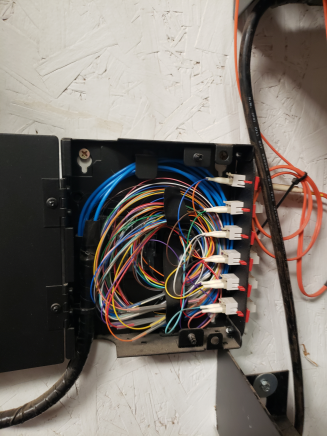Fiber Optics - Single Mode or Multimode?
Singlemode fiber cables feature a smaller core from 8 to 10 micrometers can only support one type of data transmission mode and generally preferred for long-haul installations, and tend to be more expensive to install. Multimode fiber optic cables feature a bigger core of 50 or 62.5 μm in diameter or larger that can support multiple data transmission modes. Multimode fiber is preferred for shorter distances and tends to be easier to install due to its larger cores, which are easier to align. Multimode fiber optic cables feature a bigger core of 50 or 62.5 μm in diameter or larger that can support multiple data transmission modes. Multimode fiber is preferred for shorter distances and tends to be easier to install due to its larger cores, which are easier to align. Another difference between the two cables is the bandwidth capability. Because of the core diameter of a singlemode fiber optic cable, only one signal/ray of light can pass through the fiber at a time. However, because single mode fibers work with lasers that operate in wavelengths there is less attenuation or degradation of a signal, allowing transmissions to reach greater distances than with multimode fibers. Generally, singlemode cables should be used over long distances (greater than 500 m), whereas multimode cables should be used over short distances (less than 500 m). Reason being – the larger core diameter in multimode fiber cables allows for a greater number of signals/rays of light to travel through at a time. Thus, you’re most likely to find multimode cables in LAN backbones within individual buildings and singlemode cables in inter-building connections or WANs (wide area networks).
Fiber Optics - Fusion or Mechanical Splicing?
With mechanical splicing, the typical insertion loss (IL) is higher – between 0.2 dB and 0.75 dB – because the two fibers are simply aligned and not physically joined. Insertion loss is the loss of signal power resulting from the insertion of a splice in optical fiber. Because fusion splicing provides a continuous connection between two fibers, it offers lower insertion loss and better performance. The typical loss in fusion splicing is < 0.1 dB, providing better protection against cable failure and weak signals. WE SPLICE ALL OF OUR FIBER VIA FUSION! WE CERTIFY ALL OF OUR FIBER!










